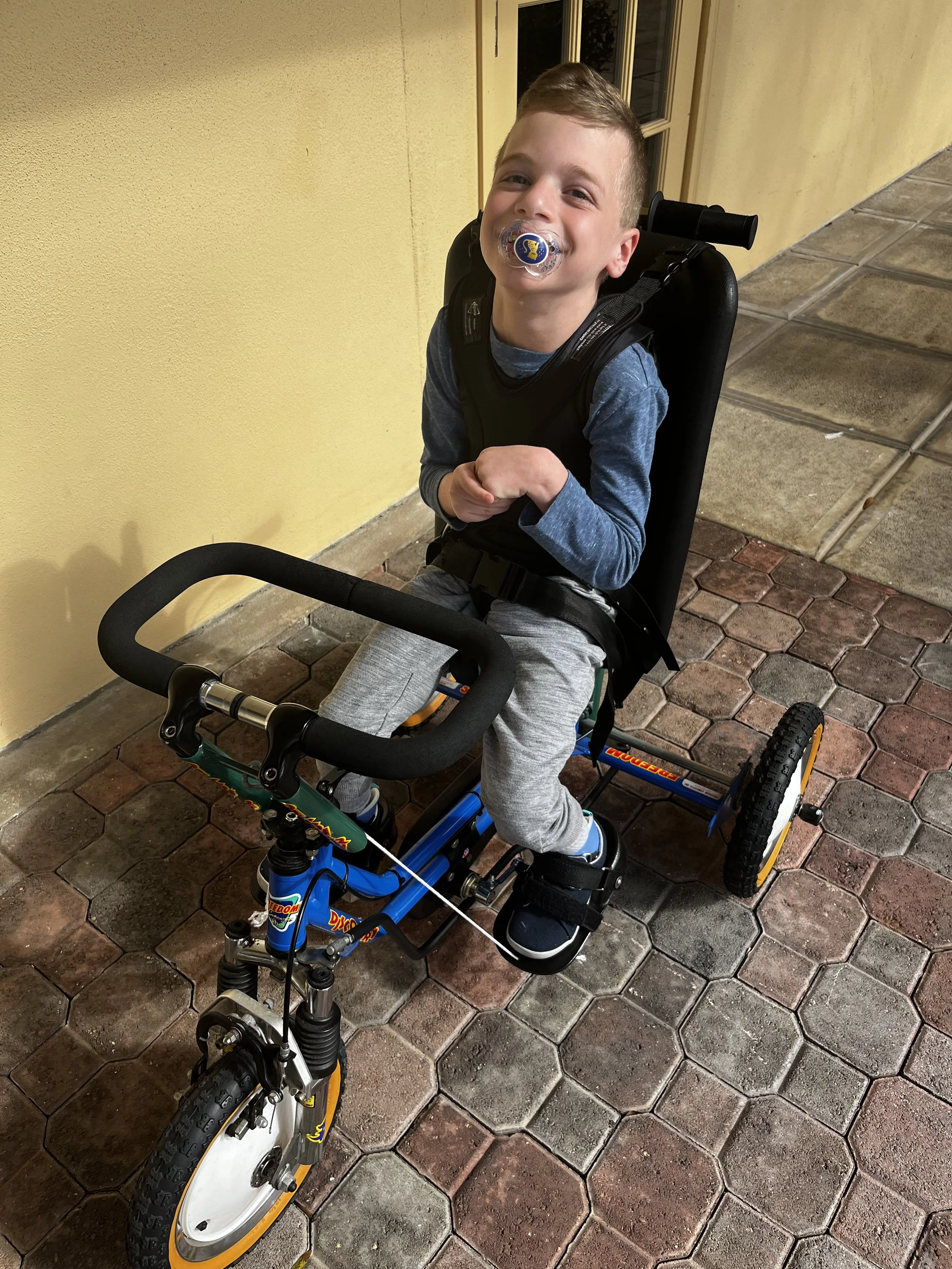The Hidden Costs of Raising a Child with a Disability and Why It Matters
Raising a child is expensive, everyone knows that. But raising a child with a disability? It’s an entirely different financial reality. One that most families don’t see coming. One that few are prepared for. And one that too often goes unspoken.
The truth is, families like ours are hurled into a world we didn’t plan for, a world full of specialized equipment, medical bills, intensive therapies, and systems that weren’t built with us in mind. We’re not superheroes. We’re just parents, doing whatever it takes to give our children the opportunities and support they deserve. But the financial toll? It’s real. And it’s heavy.
The Numbers Tell the Story
Parents of children with disabilities need nearly 18% more income each year, with the lifetime cost of raising a child with special needs averaging $2.5 million, almost ten times higher than for a non-disabled child. And that number can vary widely depending on the child’s specific needs, level of support required. A 2025 study published in JAMA (Journal for the American Medical Association) reports that families of children with disabilities faced nearly twice the rate of financial hardship, were more likely to struggle with medical bills, and experienced higher rates of delayed or forgone care due to cost.
So Let’s break it down:
Intensive Physical or Occupational Therapy: These sessions can cost anywhere from $150 to $250 per hour. Intensive therapy programs (which often run for 2-4 hours a day, 5 days a week for several weeks) can total $5,000–$15,000 or more per session (plus travel expenses) and many families pursue these multiple times per year because it’s the model of therapy that serves their child and their needs the best.
Adaptive Bikes: A custom adaptive bike, built to support a child’s specific needs, can range from $2,000 to $7,000. These are not luxuries. They’re mobility tools, confidence boosters, and crucial for participation and inclusion.
Gait Trainers and Mobility Devices: Depending on features and customization, gait trainers can cost $1,500 to 15,000. Insurance coverage is inconsistent, and families are often left to foot the bill or fight lengthy appeals.
Orthotics (AFOs/SMOs): Ankle-foot orthoses are frequently needed to support gait and alignment, and they typically cost $1,000 to $5,000 per pair. Most children outgrow them every 6–12 months, which means the expense is recurring.
AAC (Augmentative and Alternative Communication) Devices: These essential tools for nonspeaking children can range from $1,500 to $10,000, depending on the technology. Some are covered by insurance; many aren’t.
And this is just the beginning. Add in co-pays, travel costs, time off work, medical specialists, adaptive clothing, and the sheer emotional and logistical load of managing it all, and the financial picture becomes overwhelming.
We Didn’t Plan for This
No one has a baby and starts saving up for a gait trainer. No parent builds a college fund and a therapy fund. When you receive your child’s diagnosis (whatever it may be) you are thrown into a world that is medically complex, emotionally charged, and financially draining. And you have no choice but to figure it out.
Because this is your child. Because they deserve everything. So we find ways. We sell things. We borrow. We apply for grants. We lean on community. We stretch every dollar. We go without. And we do it all, not because we’re brave or strong or inspiring but because we’re parents. Just like anyone else. Just doing what we can.
This isn’t just something we’ve witnessed, it’s something we’ve lived. And if you’re thinking, "Well, at least there’s a tax deduction for medical expenses," here’s the reality: itemized deductions don’t kick in until your spending exceeds a significant percentage of your income. For many families like ours, that threshold makes it nearly impossible to get meaningful financial relief during tax season. So while those deductions exist, they’re often minimally helpful.
To make things harder, the cost of healthcare continues to rise, especially for families with complex medical or therapeutic needs. What used to be a manageable copay is now a full out-of-pocket bill. And even when insurance does approve something, it often doesn’t cover what’s actually needed to help a child thrive.
That’s why organizations like WolfPups on Wheels matter so much. We exist to ease that burden (even if it’s just a little) by helping families access the tools and therapies their children deserve.
Why It Matters
At WolfPups on Wheels, we started our mission because we live this reality. We know how hard it is to make those numbers work. We’ve felt the ache of knowing what your child needs and not being sure how to get it. And we believe no family should have to carry that burden alone.
That’s why we offer financial assistance for adaptive equipment, mobility aids, communication tools, and therapy that insurance doesn’t always cover. Because we believe that access shouldn’t depend on income and that no parent should have to choose between groceries and a gait trainer.
We’re not here to save the day. We’re just here to stand with families who are doing their best. And to remind you: you’re not alone.

